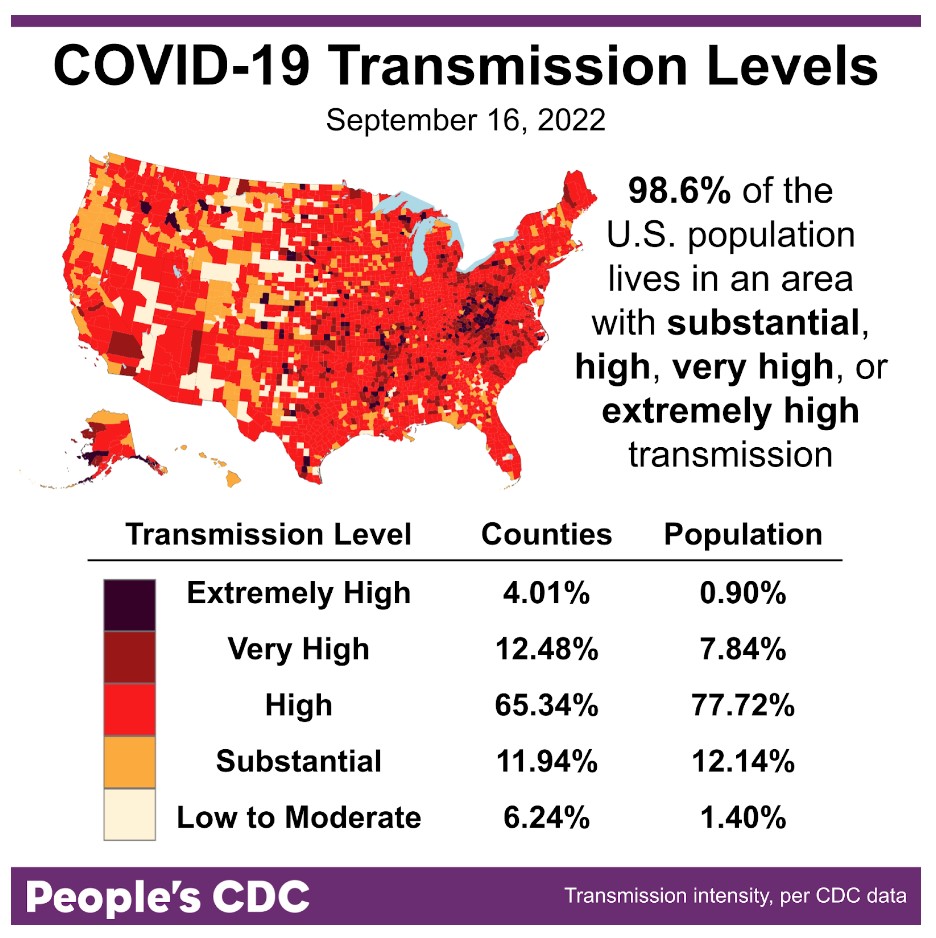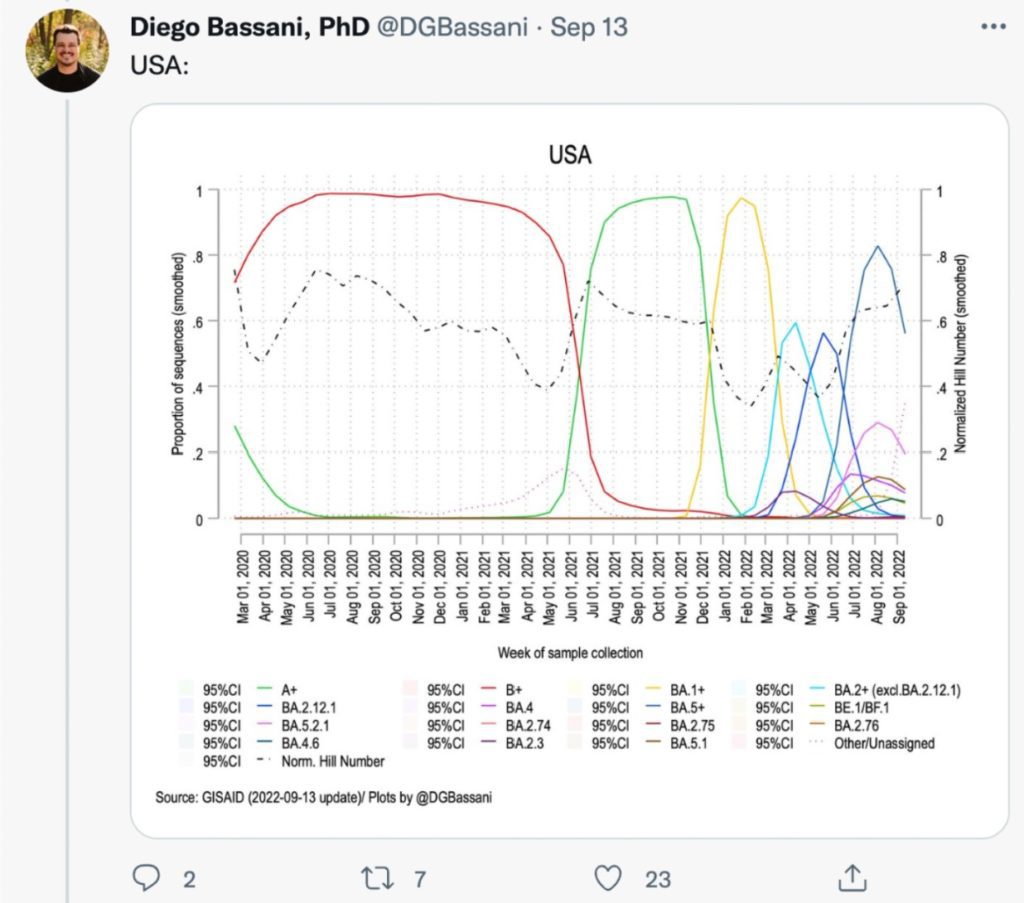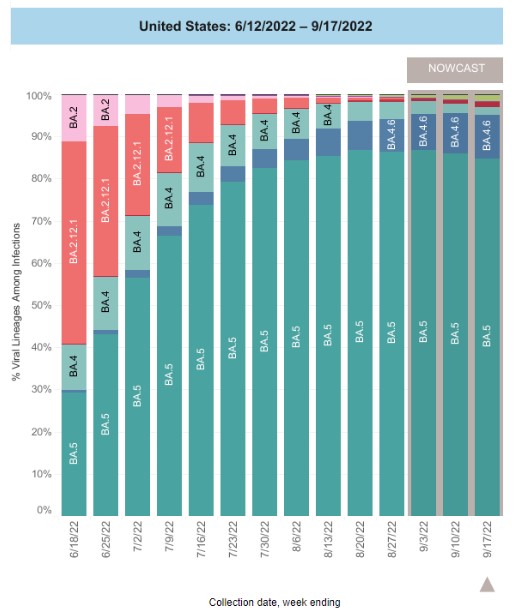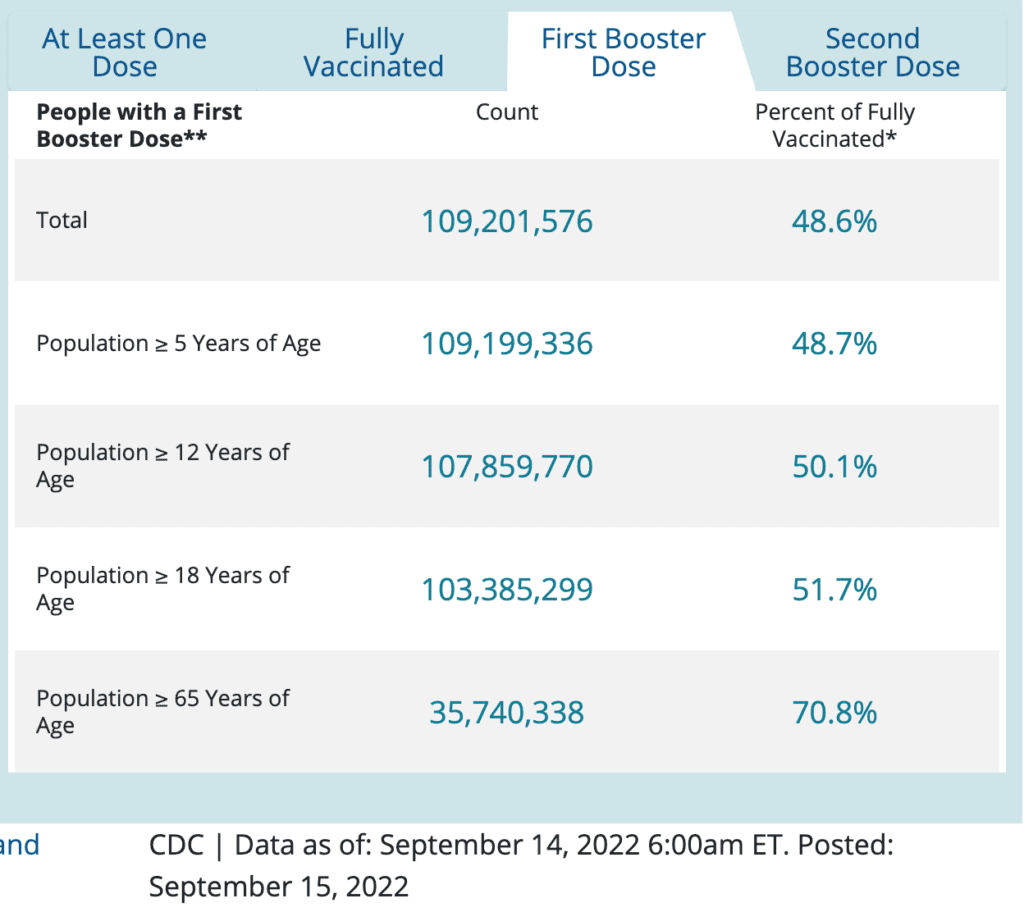The Weather: Despite Biden’s denial of reality that prioritizes profit over people’s lives, the COVID pandemic is far from over.
As we’ve seen all summer, >98 percent of the population lives in areas with substantial or higher COVID transmission. The two highest map levels here show how very high case levels are, at 100-199 (High) and 200-299 (Very High) cases per 100,000 respectively.

On Variants: Variant diversity is increasingly high in the U.S. (and many other countries), as Prof Bassani highlights.

We continue to see declines in proportion of cases due to BA.5, though still the majority (85%). 3 other variants are gaining traction: BA.4.6 now makes up 10% of cases particularly in Central Plains, Southeast & Northeast regions…

BF.7 (lime green) is at 1.7% & highest in the Northeast; and BA.2.75/BA.2.75.2 (dark red) is at 1.3%, with slightly higher percentages on the West Coast & Great Lakes.
It is increasingly hard to keep track of these variants & their subvariants. Dr Topol provides a nice summary. BA2.75 (Centaurus) had caused a surge in India, but has not been predominant in areas that first had BA4/5. It is unclear what the newer BA2.75.2 will do.

The existence of so many variants is concerning for many reasons. It means the virus is getting lots of chances to evolve. It is more difficult to study the relative severity, immunity, and transmissibility of so many variants. And it increases the chances of another surge.
A pre-print from Denmark shows re-infections have become more common with newer variants. Few folks (in grey squares) were re-infected prior to Omicron. However, Omicron was easily able to re-infect folks. The second figure shows reinfections between Omicron strains is possible.

Wastewater Monitoring: National wastewater data has been fluctuating after a brief decline. It is still at relatively high levels. Regionally, the increase is mostly from the Northeast.

Hospitalizations: Overall hospitalizations continue to go down, which is excellent news. Among kids, hospitalizations are starting to decline, but are still fairly high compared to most of the pandemic. Our kids deserve better protections.

Deaths: From September 8th through September 14th, 2,503 people died of COVID nationally.
On Long COVID: A population survey of 3,000 U.S adults found that 7% of all respondents reported Long COVID (using the UK definition). Long COVID was less common – but not eliminated – among those who were boosted.
“Long COVID is now the country’s 3rd leading neurological disorder” the American Academy of Neurology declared in July. Severity & lasting effect on the brain may not be related: people with cold-like symptoms are developing issues with cognition, anxiety, depression & sleep.
Forecast: The new updated boosters finally match the current strain. However, booster uptake has been low in the US – less than half of the population has even one booster. High-quality masking, good ventilation, access to testing & paid sick leave are all important to keep each other healthy!

Looking for an easy, effective way to clean your air? Corsi-Rosenthal boxes outperform many available air filters and work in homes, schools, & offices. Learn more about building one at cleanaircrew.org!
Actions to Take: Long COVID activists are demanding better research today, September 19. Learn more & get involved at: https://millionsmissing.meaction.net/protest2022/
Notes: 1) The numbers in this report were current as of 9/16/22. The CDC updates data frequently as it receives refreshed information. Today’s numbers may be slightly different from the data here. 2) Check out the links throughout & see our website for more! https://bej.gbh.mybluehost.me.